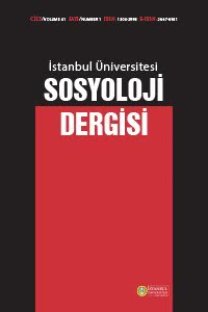MODERN BİR SAYISAL MİMARLIK ÜTOPYASI
Bu çalışma, Le Corbusier'nin Modulor adını verdiği 'evrensel' ölçeğini beden ve kent bağlamında sorunlaştırmaktadır. Bu modelde, ölçüye ve norm haline getirilen erilliğe indirgenen insan bedeni, yeryüzüyle görsel egemenlik ilişkisi kurmanın aracı haline gelir. Matematiğin doğada verili olduğu varsayımı, otokratik normatifliği modelleştirir. Oysa, evrenselliğin bile kültürel koşullara bağlı olduğu burada hatırlanmalıdır. Modulor'un pisagorcu iddialarının aksine, mimarlık tarihindeki oran sistemleri, çizgisel hale getirilebilecek bir gelenek oluşturmaz. Sembolik rakamlar, bedensel kapatma aygıtınca araçsallaştırılır. Bedene hizalar çeken diyagram, devasa genellemeler üretir. İlişki içindeki ya da hareket halindeki bedenler değil, statik bedenler çerçevelemenin nesnesi olur. Çekmece düzeni, kentsel çerçeveleme yasasıdır. İdeal olmayan bedenlere ne yapılacağı sorusu cevapsız kalırken, biyopolitika görünür hale gelir. Uyuma dayanan, mutçu, doğalcı kent arayışının eril bedeni normalleştirirken, 'öteki'leri araçsallaştırması söz konusudur. Modulor'u biyosiyasetin alegorisi haline getiren şey, bir tür organsız beden değil de, organize edilmişliğe dayalı çizgisel (ya da hiyerarşik) bir modern mimarlık ütopyası öneriyor olmasıdır.
Anahtar Kelimeler:
Le Corbusier, Modulor, Biyopolitika, Erillik, Normalleştirme
A Modern Digital Utopia of Architecture
This essay problematizes Le Corbusier's ‘universal' scale, baptized as the Modulor, in context of the body and the city. Within this model, the human body which is reduced to measures and to a masculinity that has become a norm, is being utilized to constitute a visual power relation with the earth. The supposed presence of mathematics within nature, makes the autocratic normativism a model. Yet, one can be reminded that even universality is culturally conditioned. In opposition to Modulor's pythagorean assertions, the proportional systems in architectural history do not constitute a linear convention. Symbolic numbers are being utilized by the body closing apparatus. The aligning diagram produces gigantic generalizations. Static bodies, rather than bodies in relation or movement are the objects of framing. Order of boxing is the framing law for the city. While the question what will happen to the unideal bodies remains unanswered, biopolitics becomes apparent. While the search for a harmonized, pleasing, naturalist city normalizes the masculine body, ‘others' are being utilized. What makes the Modulor an allegory of biopolitics is that it proposes a modern architectural utopia based on a linear (or hierarchical) organization rather than a body without organs.
- ISSN: 1304-2998
- Başlangıç: 2020
- Yayıncı: İstanbul Üniv. Edebiyat Fak. Sosyoloji Böl.
Sayıdaki Diğer Makaleler
SOSYALİST ÜTOPYA VE MODERNİTE: MORRİS'İN HİÇBİYERDEN HABERLER'İ
MODERN BİR SAYISAL MİMARLIK ÜTOPYASI
TÜRKİYE'DE YOKSULLUK ÇALIŞMALARI
Yusuf Akçura ve Kuzey Türkleri
ÜTOPYA ÜZERİNE GENEL BİR İNCELEME
HAYY b. YAKZAN: İNSANLIK ADASINDA YALNIZ BİR HAKİKAT YOLCUSU
EDEBİYAT VE ÖTESİ: MORE'UN ÜTOPYA'SINI BAĞLAMSALLAŞTIRMAK
UZAKLARDA BİR DİYAR: CIVITAS SOLISA
Hayal Gücüne Güç Katan Toplumsal Arka Plan: 1960'ların Ütopya Eskizleri İçin Altlık Çalışması
